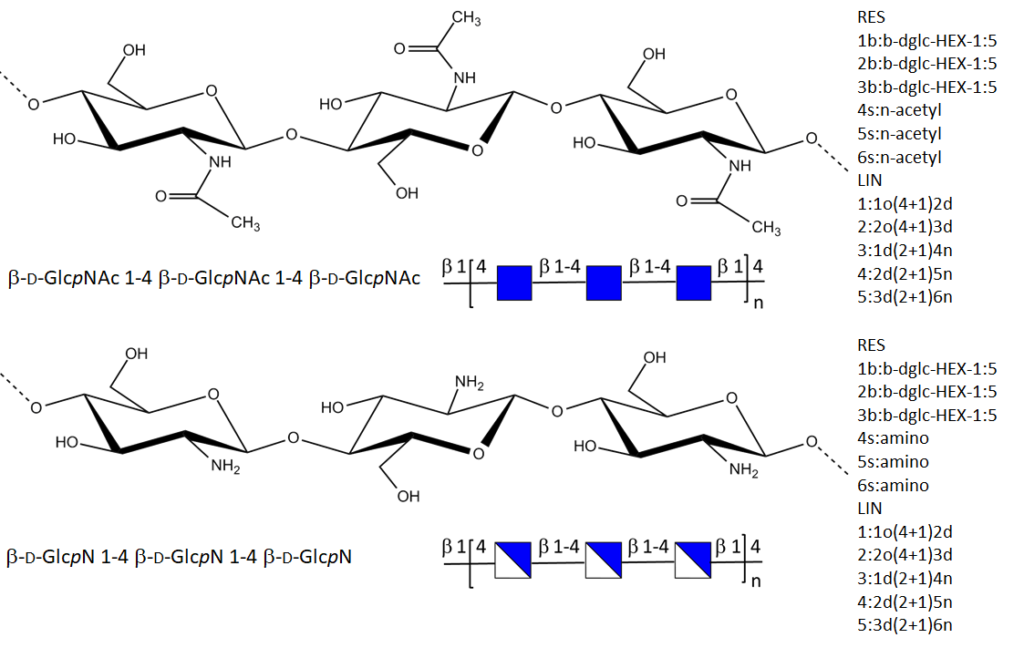The descriptions and depictions of chitin and chitosan require several levels that are linked to the carbohydrate nature and the polymeric nature of these polysaccharides. As regards to their chemical compositions, it is a common practice to use IUPAC nomenclature, in the condensed form. (McNaught, 1977) A perspective drawing of the ring offers a simplified model to represent the monosaccharides. The ring is oriented almost perpendicular to the plane of the paper but viewed from slightly above so that the edge closer to the viewer is drawn below the more distant edge, with the intra-cyclic oxygen behind and the anomeric carbon at the right-hand end. To define the perspective, the ring bonds closer to the viewer are often thickened. The naming of the ring atoms of the monosaccharides provides a convenient way to describe those substituents attached to them (OH, NAc, NH2, NH3+). As chiral macromolecules, polysaccharide chains have a polarity, the direction of which that is usually described on going from the non-reducing to the reducing residue.
In addition to the sequence representation of structures, other graphical representations have been developed favoring cartoon representations that facilitate the visualization of the monosaccharides present. This graphical representation, called SNFG (Symbol Notation for Glycans) (Varki et al., 2015) has been proposed as the result of a concerted international agreement with the hope it will cope better with the rapidly growing information on the structure and functions of glycans in chemical and biological systems. In view of the ubiquitous occurrence of polysaccharides and oligosaccharides, along with their properties (Birch et al., 2019) and functions (Clerc et al., 2018, 2019), their introduction in databases is growing. In anticipation of the need to interconnecting and interoperating such databases, the representations and computational processing require the development of standards. Bioinformaticians have developed a collection of tools to parse and translate glycan and polysaccharides structures across different encoding systems. In recent years, different databases have introduced GlycoCT (Herget et al., 2008) as a standard encoding system. Figure 5 exemplifies the use of these distinct modes of representations of chitin, chitosan, and their oligomers.


Because of their polymeric natures, the descriptions of the structures of chitin and chitosan require several descriptors : the molecular weight distribution ; the weight-average molecular weight ; the number-average molecular weight ; the degree of polymerization (DP) and the dispersity of the molecular weight.
